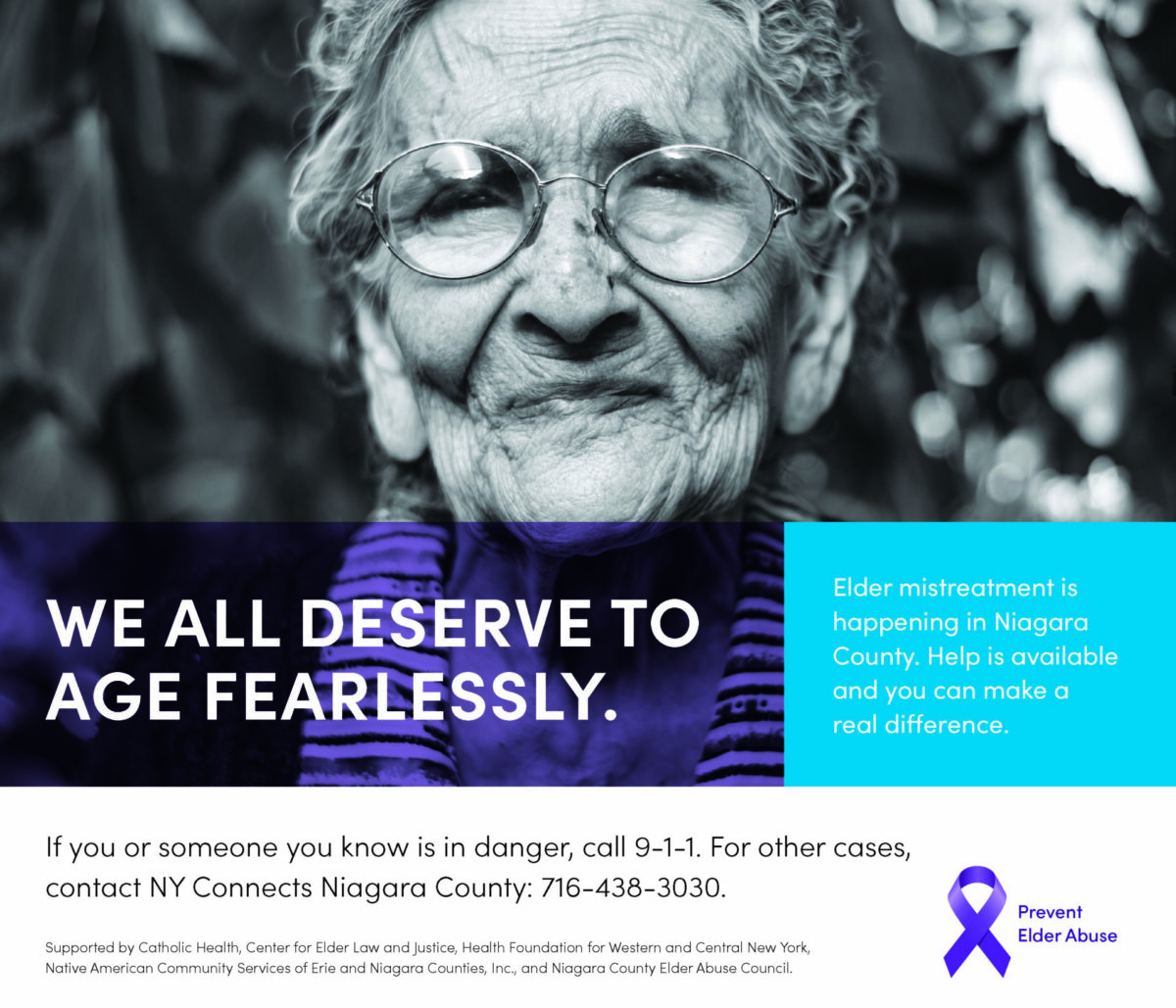June is World Elder Abuse Awareness Month, an opportunity for communities to promote a better understanding of abuse and neglect of older persons by raising awareness of the cultural, social, economic, and demographic processes affecting elder abuse and neglect.
There is something everyone can do. A coalition of local partners in Niagara County (Native American Community Services of Niagara and Erie County, Health Foundation for Western and Central New York, Center for Elder Law and Justice, Catholic Health), is urging residents to take action if they suspect a case of elder abuse. If someone is in imminent danger, people should immediately call 9-1-1. For all other situations, people should call or email NY Connects Niagara County at 716-438-3030 or nyconnects@niagaracounty.com.
Elder mistreatment is quite common, affecting as many as 10% of community-dwelling older adults each year, with those living in nursing homes or other institutional settings at even higher risk. Neglect and mistreatment occurs particularly frequently among those with dementia.
“The ability to live free from abuse at any age is integral to a just society,” said Center for Elder Law and Justice Social Worker Kathleen Kanaley. “As our population of older adults grows, so does our responsibility to provide the necessary services to make this possible.”
There are many things one can look out for when concerned about neglect. It comes in many forms and can happen at home, at a relative’s home, or in an eldercare facility. Loved ones, hired caregivers, or strangers can perpetrate the mistreatment which can be physical, emotional, sexual, or financial. Observing the older adult’s appearance can be helpful. For example: appearing disheveled or unkempt, matted hair, poor dentition, foul body odor, dirt under fingernails, and elongated finger/toenails. The older adult may also be wearing clothes that are inappropriate for the weather.
“We sometimes see patients coming to the emergency department in soiled diapers or with feces on them,” said Dr. Anthony Rosen, a researcher in elder abuse and geriatric injury prevention at Weill Cornell Medical College and a practicing Emergency Physician at NewYork-Presbyterian Hospital.
“Older adults may also appear dehydrated or malnourished or are not taking medications as prescribed. An older adult who has not seen a physician in a long time would be concerning as well. Reports of a hoarded or unclean home may also be a sign of neglect. However, it is important to note that people should try to look at the whole picture before making a determination. each of these findings can have alternate explanations, and an older adult with multiple of these should increase concern.
“Of all the mistreatment types, neglect is associated with the highest morbidity and mortality, dramatically increases risk of emergency department use, hospitalization, and nursing home placement. It is also the most associated with decline in physical functioning,” Dr. Rosen said
For more information, visit the National Center on Elder Abuse at https://eldermistreatment.usc.edu/weaad-home/.



